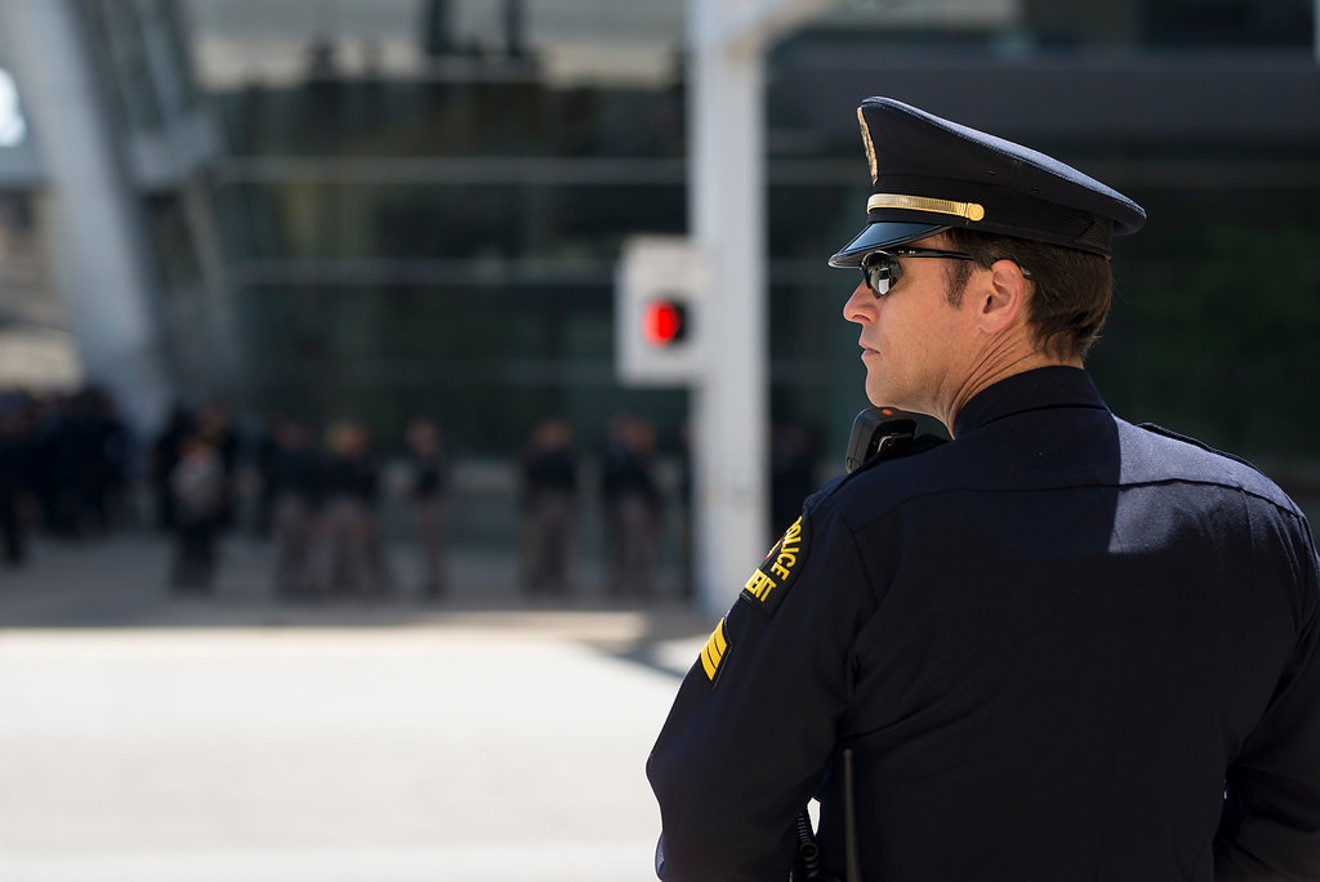DPD's problems can be addressed, but they run deeper than a mere numbers game, no matter how badly several members of the Council wanted the KPMG auditors who wrote the study to just give them a number of new police hires that would save the city.
The report says as much on page 19.
The per capita–based approach, while favored by many police departments nationally, has been critiqued by the International Association of Chiefs of Police (IAPC). Their conclusion, “Ratios, such as officers-per thousand population, are totally inappropriate as a basis for staffing decisions. Defining patrol staffing allocation and deployment requirements is a complex endeavor which requires consideration of an extensive series of factors and a sizable body of reliable, current data,” has led many departments to utilize alternative approaches to determine staffing allocation. Extensive research has concluded that a workload-based approach to staffing is the most effective method due to the consideration of environmental and department-specific variables that it considers.KPMG's refusal to give the council members exactly what they wanted, in addition to reporting about the study's lack of a hard target number for hiring, makes it easy to look past the bevy of data and information that is in the report. KPMG gave the city three easy ways to hit their response-time targets, two of which are based on far more realistic hiring expectations than have been floated by those who want the department to completely replace the 700 or so officers it's lost since its staffing peak in 2011.
DPD can, with its current numbers, meet 98% of call demand: The study lays out three clear scenarios for optimized staffing at the department, depending on the number of new officers brought in.
The first of the scenarios assumes no new hiring but would still result, according to the study, in 98% of all calls to DPD being answered within department goal times. DPD's goal for responding to a Priority 1 call — typically a murder or shooting — is to get to the scene in eight minutes. In 2018, DPD officers responded to the average Priority 1 call in 8.35 minutes. Priority 2 calls — typically assaults, robberies or fire calls — are supposed to be answered in 12 minutes. Last year, it took officers an average of 22.08 minutes to show up.
Even without an influx of new officers, KPMG says smart assigning of patrol officers could make those call response numbers a lot better. The firm even developed a software tool for the department to help it distribute officers and overtime hours — however many the department has of either — as efficiently as possible.
DPD's clearance rates aren't shocking, but they're still disheartening: The study confirms something anyone who's ever called DPD after a burglary has known for a long time — Dallas police don't solve property crimes. DPD's clearance rate for property crimes over the last three years is 7%, 4.8 percentage points lower than the FBI's 11.8% benchmark. The department clears about 37% of violent crimes but still falls seven points short of the FBI's recommendation.
Among the 13 cities with similar demographics used throughout the study for comparison purposes, Dallas' violent crime clearance rate comes in ninth and its property crime clearance rate comes in tied for 12th.
DPD's murder clearance rate is one bright spot. From 2015 to 2017, detectives cleared 67% of the murder cases they investigated, two points higher than the FBI benchmark.
DPD needs outside help: Throughout KPMG's report, the firm repeatedly recommends that the police department use more non-sworn personnel for things like investigating misdemeanors, crime analysis and help resolve calls that don't need to be addressed by sworn officers. Only 17% of those employed by DPD are civilians, far fewer than those in other cities looked at by KPMG.
The Las Vegas Police Department, for example, has a 34% civilian workforce. In Fort Worth, almost a quarter of those employed by the department aren't cops.
"The goal of (using civilian investigators) is increased efficiency — to relieve sworn investigators of the low-priority or less complex cases so that they can devote more time to solving felony crimes," the report says.
Squeaky wheels get greased, and that costs officers time: KPMG found that 14%-19% of demand for patrol officers, depending on the year, came from DPD itself, rather than calls from the community. While these "department-directed" activities aren't tracked well enough so that the firm could analyze what any officer might have been doing at a specific time, the auditors provided anecdotal evidence about what might be happening."(T)wo officers spent two weeks patrolling outside the City library to move along homeless due to a complaint." — KPMG
tweet this
"The majority of the calls are related to special assignments, which based on interviews consists of reactionary tasks that officers are diverted from patrol duties. For example, it was noted during interviews that two officers spent two weeks patrolling outside the City library to move along homeless due to a complaint," the report says.












